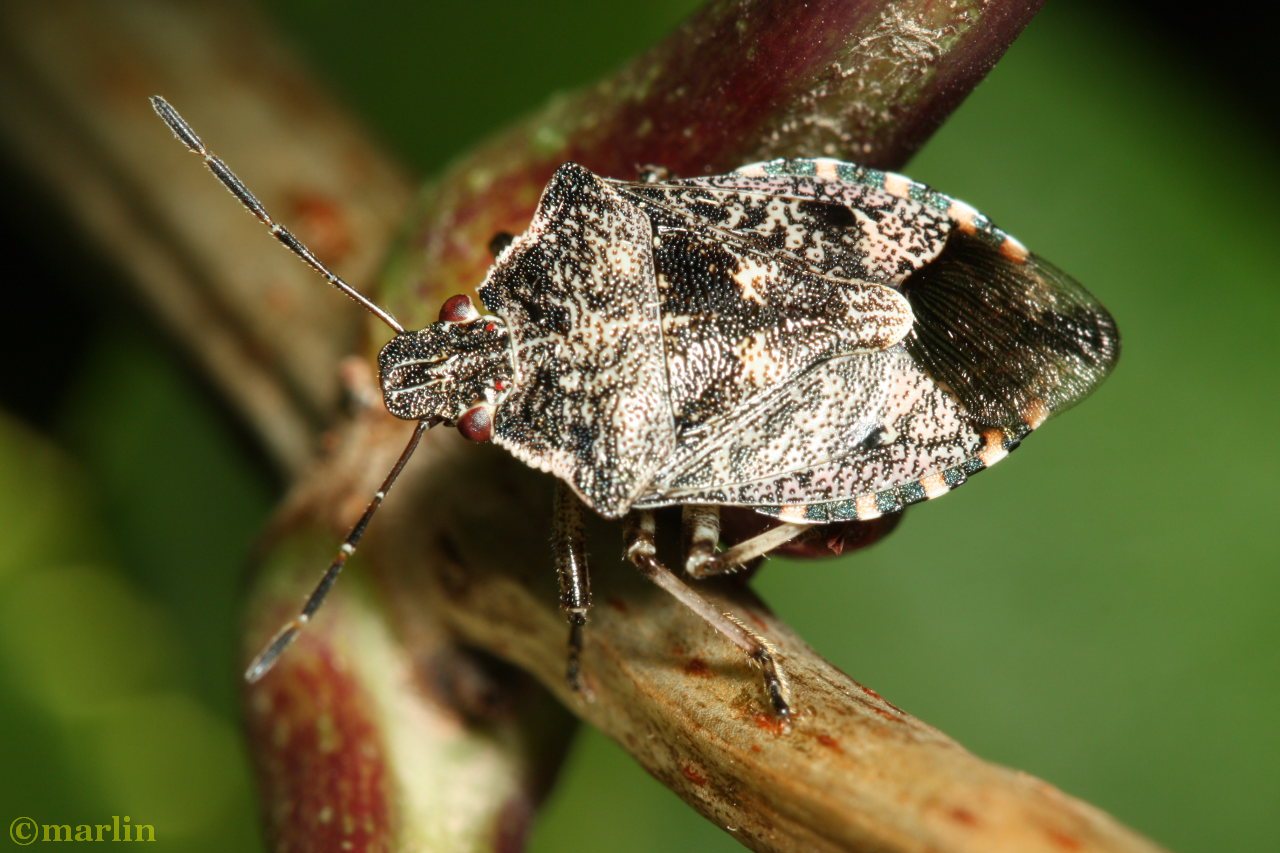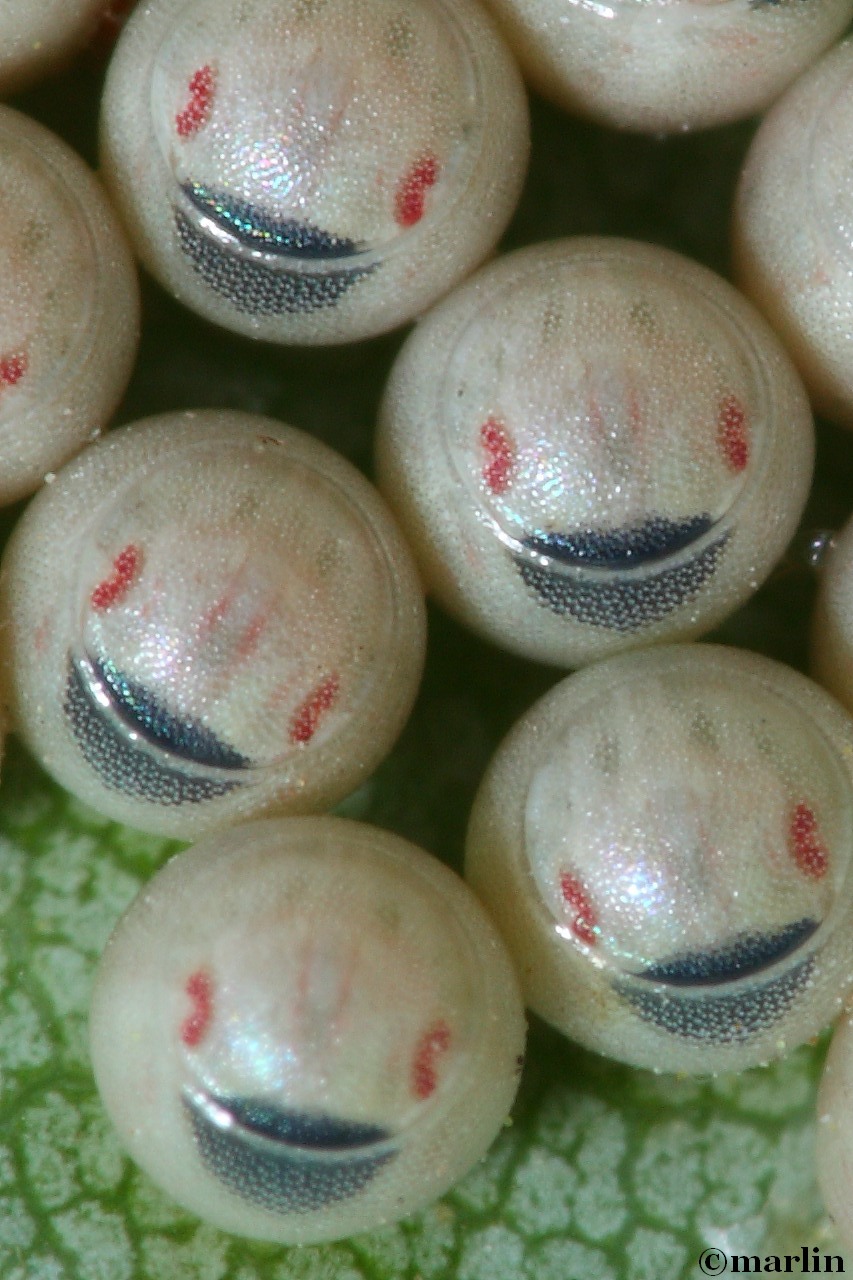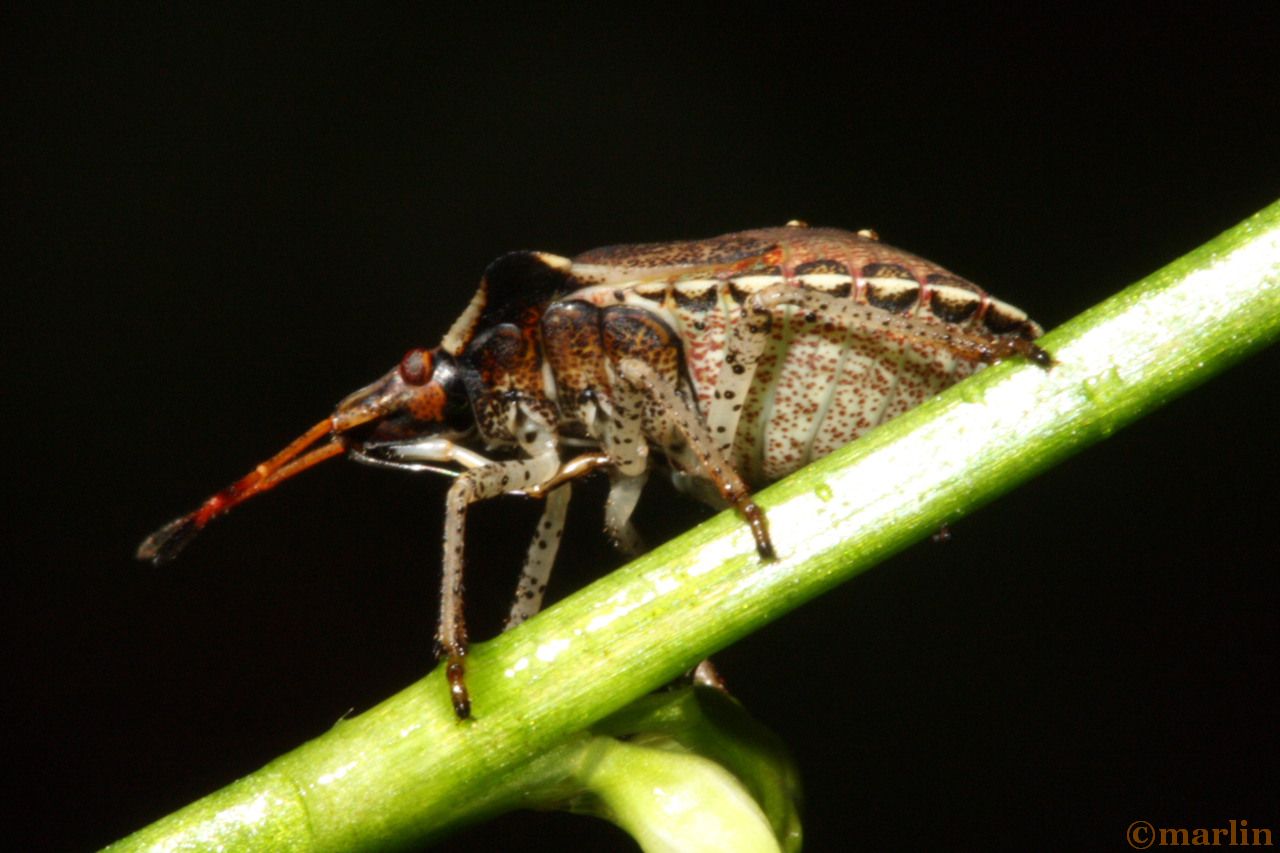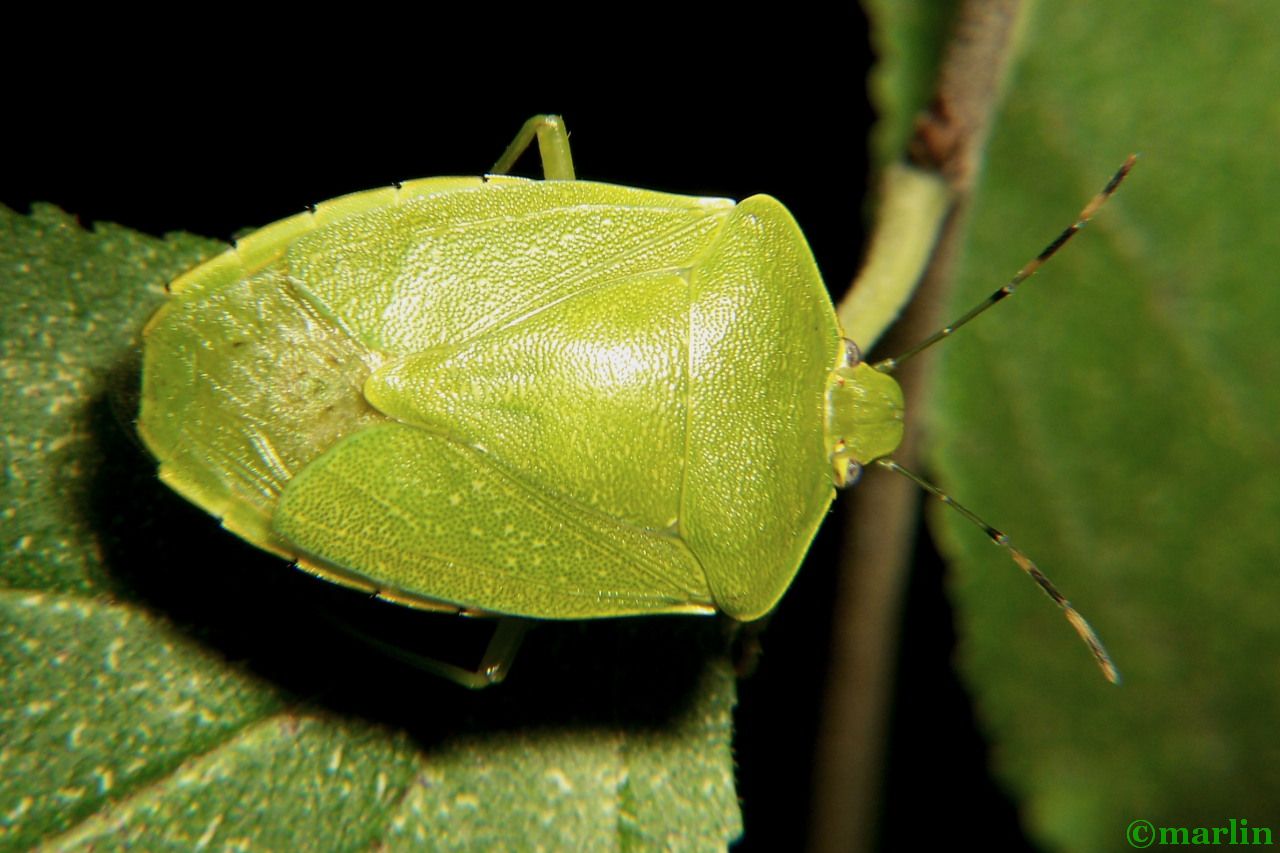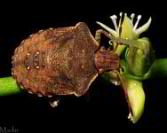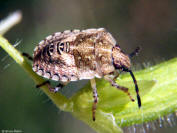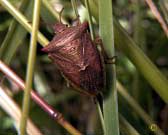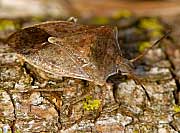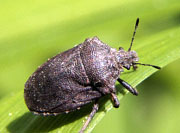Family Pentatomidae – Stink Bugs
I found this lovely predatory stinkbug Apetitus lineolatus at home at 9650 ft. elevation at White River Nat’l Forest, Eagle County, Colorado.
Stink bugs get their common name from the foul-smelling fluids they exude when disturbed. Both adults and nymphs have large glands that discharge underneath the body. 
Most stink bugs are herbivorous, or plant-eating. Like all true bugs, the adults are equipped with a beak, or rostrum, a hypodermic needle-like device carried under the head, which it uses to pierce the plant tissue and suck out liquids.
But they do not simply “suck out sap”, they inject a tissue-dissolving saliva and vacuum out the resulting slurry. Damage to the plant is a result of these liquefying enzymes.
Stink bug eggs pasted to the underside of a maple leaf attest to Mother Nature’s sense of humour. The eggs have dimples like golf balls, and the cookie jar lids sit just so, ready to be opened at the first twitch of an emerging nymph. Each egg is just 1mm in diameter (about .04 inch).
Stink bug nymphs of many species are gregarious, that is, they hang around together while growing through the various instars. The female inoculates the eggs with bacteria the nymphs will need to populate their digestive tracts, much like mammals convey microorganisms to their progeny by suckling.
Late instar green stinkbug nymph is ready for its final molt. An insect grows in a series of expansions known as molts. The interval between molts is known as an instar.
Stinkbug characteristics: triangular scutellum, ocelli, compound eyes and flying wings.
After the final molt, an insects gets its wings and grows no more. – it only has to eat to live, not grow.
The relatively small (5-7 mm) twice-stabbed stink bug Cosmopepla lintneriana is one I often find in clusters on morning glory or related plants.
I found this energetic stinkbug nymph on a warm day in August, in the Allegheny National Forest near Marienville, Pennsylvania, USA.
The green stink bug Chinavia hilaris is one of the largest and the most commonly encountered in North America.
References
- Bugguide.net, Stink Bug Nymph – Euschistus tristigmus
- Alfred G. Wheeler and Sir T. Richard E. Southwood FRS, Biology of the Plant Bugs
- American Museum of Natural History, National Science Foundation and University of New South Wales, Plant Bug Planetary Biodiversity Inventory, Plant Bugs (Miridae)

